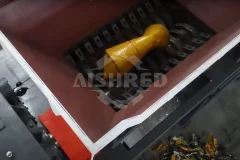
Iron Scrap Shredder Machine in Malaysia
2025-02-05Recently, our GEP iron scrap shredder production line was successfully shipped to Malaysia. To ensure the smooth operation of the project, our engineer traveled to Malaysia to oversee the installation and provide technical guidance on-site.Customized Production LineTo meet the specific requirements of the Malaysian customer, we customized the production line based on the desired output, processing capacity, and available workshop space. Adjustments were made to the chamber size, cutter arrangement, and the number of cutter teeth to optimize performance. This tailored approach has gained recognition and approval from our Malaysian client.Introduction to the Malaysia ProjectFor this project, the production line is designed to process iron scrap with high efficiency.Input Material: Various types of iron scrap, including metal sheets, bars, and castings.Processing Capacity: Approximately 6 tons per hour.Output Size: Shredded pieces of 3-5 cm, suitable for recycling and smelting.The production line includes a
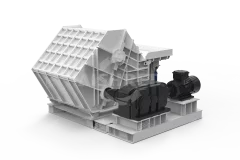
Heavy Duty Metal Debaler for Sale
2024-12-31Today, we are introducing the metal debaler, also called metal bales opener/breaker, a machine widely used in the metal recycling industry. This compact, robust, and powerful equipment delivers excellent performance in improving efficiency while significantly reducing labor and time costs.One of the key challenges in metal recycling is maximizing your input-output ratio. Typically, you don't want a production line that is either too powerful or too small. In many of GEP Ecotech's case studies, our customers have successfully addressed these challenges with this equipment.Similar to traditional agricultural baling processes (e.g., straw or stalks), baling materials helps save a considerable amount on transportation costs. However, it also introduces the challenge of unbaling the materials before moving on to the next stage of processing. In metal recycling, if you are unable to efficiently unbale the materials, you may face several issues:Over-investing in larger shredders: This would significantly increase bo
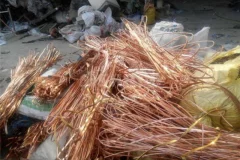
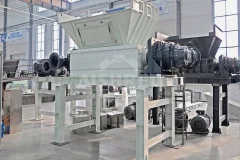
Is it easy to bale waste copper wires directly with a baling machine? Recently, a customer from the Colombia encountered some issues such as copper wires intertwining with each other, copper wires getting stuck when entering the baling machine, and the personal safety of operators.Therefore, they considered shredding the copper wires first to reduce the size and solve the above problem. They made an inquiry to us for a metal crusher with a production capacity of 500kg/h and a discharge size of 200-300mm.After the technical department's calculation, we recommended the corresponding double shaft shredder to the customer. This shredder has the characteristics of low speed, high torque, low noise, and good stability. It also has the advantages of simple structure, sturdy material, low energy consumption, high processing efficiency, and convenient operation and maintenance. In addition, it is specially designed with an independent disassembly and anti winding fixed cutter structure.Subsequently, we communicated
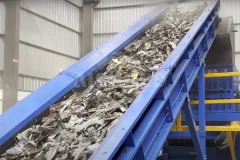
55kW Metal Shredders in Hungary
2024-10-29Project BackgroundIn recent years, Hungary has made significant strides in enhancing its recycling capabilities, driven by the growing demand for sustainable waste management solutions across Europe. To support this effort, a metal recycling company in Hungary sought a reliable and efficient shredder capable of processing large volumes of scrap metal, including metal drums, aluminum profiles, and other industrial waste materials. This company partnered with GEP Ecotech, a leading provider of industrial shredding and recycling equipment, to install a 55kW metal shredder as part of its state-of-the-art recycling facility. Equipment Overview: 55kW Metal ShredderThe 55kW metal shredder provided by GEP Ecotech is a dual-shaft shredder specifically designed to handle tough metal materials. This equipment combines high-capacity processing with energy efficiency, making it ideal for both medium and large recycling facilities. Key specifications of the shredder include:Model : GD8 Double-shaft intelligent shredderCapi
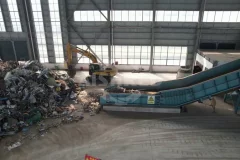
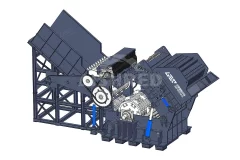
A new metal crushing and sorting line has begun trial operation in central China. This advanced production line integrates various high-efficiency equipment, including a metal shredder, magnetic separator, eddy current separator, air classifier, dust removal system, and other components, capable of processing around 15 tons of metal waste per hour. The line is designed to transform complex scrap metal into high-quality secondary raw materials through a multi-step process.The core of this line is the metal crusher, which is responsible for breaking large scrap metal into smaller, recyclable pieces. Following crushing, the magnetic separator and eddy current separator efficiently separate ferrous and non-ferrous metals, ensuring accurate material classification. The air classifier is used to remove lighter impurities, ensuring the purity of the final product. Meanwhile, the dust removal system significantly reduces dust emissions, meeting environmental standards.The processed product consists of clean, small
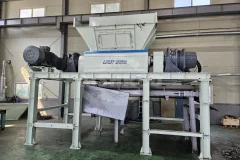
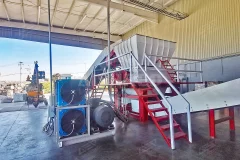
Innovative highlights of scrap metal shredders Scrap Metal Shredder, a machinery and equipment designed for converting waste metals into small pieces of materials that are easy to manage and reuse. It plays an irreplaceable role in many metal recycling processes, such as scrap iron and steel, scrap non-ferrous metals and dismantling of end-of-life vehicles, which greatly promotes the efficient recycling of metal resources. The core competitiveness of the scrap metal shredder lies in its unique shredding mechanism. Through the precision cooperation between the high-speed rotating movable knife and the stationary fixed knife, it generates extremely strong shearing force, and gradually breaks down the scrap metal entering the shredding room into smaller particles. After the initial processing of these metal fragments, through precise screening and classification, they can be directly put into the smelting process, realizing the second life of resources. Innovative highlights of the scrap metal shredder
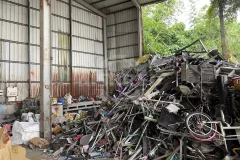
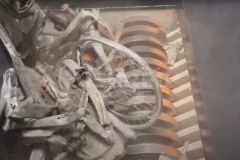
With growing environmental concerns and the pressing need for sustainable practices, the metal recycling industry in Australia is witnessing significant advancements. Efficient and robust metal recycling equipment is pivotal in meeting the increasing demand for metal recovery and processing. This article explores the various types of metal recycling equipment available for sale in Australia, their features, applications, and the benefits they offer to recycling operations.Types of Metal Recycling Equipment1. ShreddersFeatures and ApplicationsShredders are fundamental in the initial stage of metal recycling, breaking down large metal pieces into smaller, manageable fragments.Single-Shaft Shredders: Suitable for processing lighter materials and providing precise control over output size.Dual-Shaft Shredders: Known for their robust design, these shredders can handle heavier, bulkier metal waste, including automotive parts and industrial scrap.Four-Shaft Shredders: Offer superior cutting efficiency and are ideal
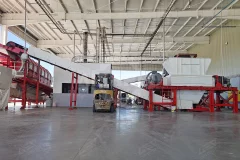
The Significance of Aluminum Scrap Recycling
2024-05-21With the development of the global economy, the market demand for waste aluminum recycling industry will gradually increase. At the same time, with the development of technology, the technology of waste aluminum recycling will continue to innovate, bringing more opportunities and challenges to the development of the industry. The significance of aluminum scrap recycling is profound, and it can be said that it is a contribution in the present and a benefit in the future.Firstly, aluminum recycling can save energy and resources, reduce environmental pollution, and also reduce greenhouse gas emissions, which is of great significance for environmental protection.Secondly, aluminum recycling can obtain renewable resources and reduce dependence on natural resources. Such as aluminum metal and aluminum alloy, which can also achieve high economic value. The value of scrap aluminum is generally evaluated based on factors such as its purity, shape, size, and impurity content.Thirdly, waste aluminum recycling can be
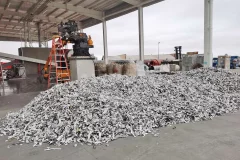
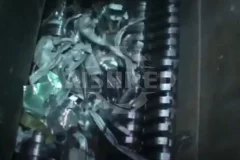
Shredder Machine for Light Metal
2024-03-21In the realm of metal recycling, the efficient processing of light metals such as aluminum, magnesium, and alloys is crucial for sustainable resource utilization. Light metal shredders play a pivotal role in this process, enabling the effective fragmentation and separation of metallic materials for recycling purposes. Key Features of Light Metal ShreddersHigh-Speed Shredding: Light metal shredders are equipped with high-speed rotor assemblies and sharp cutting blades to ensure rapid and efficient shredding of metal components. Variable speed controls and adjustable shredding parameters allow operators to customize shredding processes according to specific material characteristics and recycling requirements.Material Handling Systems: Light metal shredders feature robust material handling systems, including conveyor belts, feed hoppers, and discharge chutes, to facilitate continuous and uniform material flow. Automated feeding and discharge mechanisms optimize shredder throughput and minimize downtime for
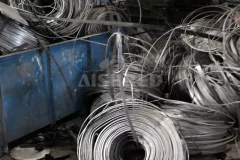
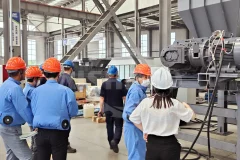
Scrap iron wire is an infinitely recyclable renewable resource and an excellent iron-making material, so the recycling of scrap iron wire is of great significance. So how do we recycle scrap iron wire? When recycling scrap iron wire, we need to carry out some formal processing to better improve the utilization rate of scrap iron wire, of which shredding is a very important step.However, the shredding of various mixed wires brings particularly huge challenges to industrial shredders. Scrap wire is highly abrasive, heavy, and often bulky. The emergence of GDI shear shredder has successfully solved this problem. It has a good shaft structure design, low noise, durability, easy replacement of blades, and can easily break bundles of wire or loose iron. We call this The machine is a scrap wire shredder.Features of GDI scrap wire shredder:The scrap wire shredder runs slowly, has low noise and less dust.The blade material is made of special alloy steel and has a long service life.Powerful shredding capabilities and
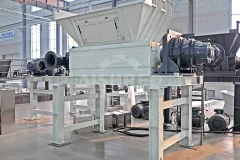
Steel Swarf/Chips Shredder
2024-02-23Steel swarf/chips are usually used in electric arc furnace steelmaking, in order to recycle, but this recycling has its drawbacks, one is the recycling rate is low, the general recovery rate of 84% or so, in addition, the amount of fumes generated by large, large energy consumption; there are also used in the medium-frequency furnace, such as the melting of the steel swarf/chips, but the amount of suction of steel is large, the content of impurities is large, the billet cast out of the steel or made of materials of unstable quality, the use of scrap steel swarf/chips has become a thorny issue. Steel swarf/chips shredder adopts planetary gear reducer drive, the cutters are made of NiCrMo alloy steel, has strong wear resistance and high strength etc. characteristics, differential speed operation between the shafts, has the function of tearing, squeezing, biting and so on. The electrical part is controlled by PLC, with automatic detection of overload protection and other functions. Advantages of steel swarf/
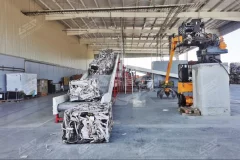
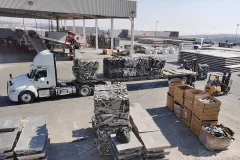
With the continuous development of industrialization, the disposal of scrap metal has gradually attracted people's attention. Scrap metal shredder as an efficient, environmentally friendly processing equipment, has gradually become the first choice in the field of scrap metal processing.First of all, the scrap metal shredder has a very high processing efficiency. Through the powerful shredding force, the scrap metal can be quickly shredded into small particles, greatly reducing the processing time. At the same time, the shredded metal particles are easier to store and transport, providing convenience for subsequent processing.Secondly, the scrap metal shredder has significant environmental advantages. The traditional way of handling scrap metal often produces a large amount of pollution, posing a threat to the environment and human health. The scrap metal shredder, on the other hand, adopts advanced low-noise, low-emission design, which effectively reduces the environmental pollution in the treatment process
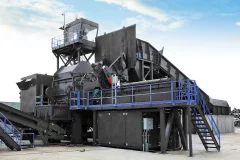
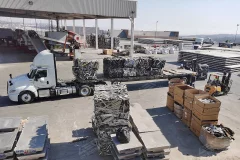
When it comes to metal processing and waste management, the Hammermill Shredder is an essential piece of equipment. It is widely used for shredding discarded metal materials such as automotive wreckage, discarded electronic devices, and other metal scraps into smaller particles for further recycling or disposal.Working Principle of the Hammermill ShredderThe Hammermill Shredder operates based on a set of rotating hammers that crush metal materials at high speeds. It shreds metal waste into smaller particles through impact and shear forces. The primary function of a Hammermill Shredder is to reduce large metal pieces into smaller, manageable fragments. It is particularly effective in breaking down bulky metal waste, such as automotive parts or appliances, into smaller particles. Hammermill Shredders typically have a single rotor with multiple hammers mounted on it. The hammers strike the metal waste as it passes through, resulting in fragmentation. Hammermill Shredders are commonly used in the initial stages

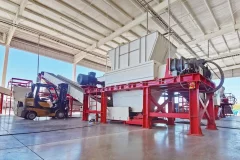
UBC stands for Used Beverage Cans, and as the name suggests, it primarily consists of aluminum beverage containers that have been consumed and discarded by consumers. These cans are commonly used for packaging various beverages, including cocal, soda, beer, and energy drinks. UBC originates from households, commercial establishments, and public spaces, where people consume these beverages and then empty cans are collected by recycler.The recycling value of UBC is substantial and multifaceted. Aluminum, the primary metal in UBC, is highly sought after in the recycling industry for several reasons. Firstly, recycling aluminum requires significantly less energy compared to producing new aluminum from raw materials. This energy efficiency translates into reduced greenhouse gas emissions and conserves valuable resources. Secondly, aluminum retains its quality and properties even after multiple recycling cycles, making it an ideal material for sustainable manufacturing. Lastly, the recycling of UBC reduces the

Metal Shredders for Sale in South Africa
2023-12-28Metal shredders in South Africa have become instrumental in advancing the recycling industry by efficiently processing and recycling various types of metal scrap. These machines play a crucial role in transforming discarded metal materials into reusable resources, contributing to sustainable waste management and resource conservation efforts.Usage of Metal Shredders in South AfricaThe utilization of metal shredders in South Africa has gained momentum owing to their effectiveness in handling diverse metal scrap materials. These machines are extensively used in:Scrap Yards and Recycling Facilities: Metal shredders are prominently employed in scrap yards and recycling facilities to process and recycle ferrous and non-ferrous metals. They efficiently shred materials like steel, aluminum, copper, and more, preparing them for further processing and reuse.Industrial and Manufacturing Sectors: Various industries and manufacturing plants utilize metal shredders to manage their metal waste. These machines aid in
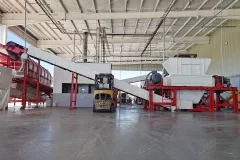
Large Scale Aluminium Recycling Plant
2023-11-16A large-scale aluminum recycling plant involves advanced processes and equipment to efficiently recycle significant volumes of aluminum scrap. Here's an overview of the key components and processes typically found in such facilities:Collection and Sorting:Material Procurement: Collect aluminum scrap from various sources, including manufacturing waste, post-consumer products, construction materials, and automotive parts.Automated Sorting Systems: Employ advanced sorting technologies such as electromagnetic separators, eddy current separators, and optical sorting machines to segregate different aluminum alloys, forms, and contaminants.Shredding and Processing:Shredding and Shearing: Utilize heavy-duty shredders, shears, or granulators to process large aluminum items into smaller fragments or chips, optimizing for melting efficiency.A large-scale aluminum recycling plant integrates advanced technologies and processes to handle substantial volumes of aluminum scrap, contributing significantly to resource

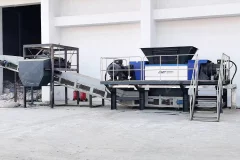
The catalytic converter is an exhaust purification device installed at the vehicle's exhaust outlet. Through oxidation and reduction reactions, it transforms harmful gases such as carbon monoxide, hydrocarbons, and nitrogen oxides emitted from the vehicle exhaust into carbon dioxide, water, and nitrogen. The converter's filter core contains three rare precious metals: platinum, palladium, and rhodium. By dismantling the discarded catalytic converter canister and extracting the filter core, these metals can be further refined.Small-scale recyclers typically disassemble the catalytic converter to obtain the filter core, which is then sold to smelters. Larger recyclers handle the metal recovery and refining process internally. Manual workshops often use dismantling machines to extract the filter core from the canister. However, this method is unsuitable for large enterprises due to significant safety risks and low automation levels, making it inefficient for high-volume tasks.GEP ECOTECH has designed an
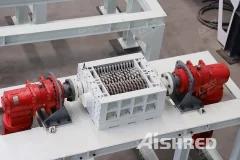
Two Shaft Aluminium Beverage Can Shredder
2023-10-21A two-shaft aluminum beverage can shredder is an industrial machine designed specifically for shredding and reducing the size of aluminum beverage cans. These shredders play a crucial role in recycling operations, as they help process aluminum cans into smaller particles for further recycling and material recovery.Video of Twin-Shaft Shredder Shredding Aluminum CansKey Features of a Two-Shaft Aluminium Beverage Can ShredderDual Shafts: As the name suggests, a two-shaft shredder has two parallel shafts equipped with sharp blades or cutting discs. This design enhances the efficiency of shredding and ensures a more thorough reduction of material.Cutting Blades: The cutting blades on each shaft are strategically positioned to cut through aluminum cans effectively. The blades are designed to withstand the abrasive nature of metal shredding.High Torque and Power: Two-shaft shredders typically have high torque and power to handle the tough and rigid nature of aluminum cans. This is important for achieving efficient
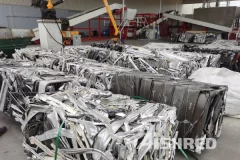
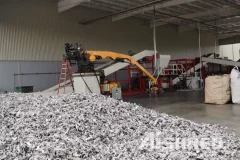
Compressed Aluminum Scrap Shredder Machine
2023-07-18As the most widely used and valuable metal in the world, aluminum plays a crucial role in industrial production and daily life. Scrap aluminum recycling is a highly profitable and well-established industry. Typically, scrap aluminum products are packaged (to save storage and transportation costs) and transported to the smelter. The smelter needs to preprocess the scrap metal before melting it. The primary processes involved are shredding and sorting, aiming to reduce energy consumption during melting and separate other metals. The picture above showcases an exemplary aluminum scrap shredding and sorting system that we recently implemented in Mexico. This comprehensive system includes cutting-edge equipment and machinery designed to optimize the recycling process. Among the components featured in this system are the AIShred GC12 pre-shredder, AIShred GD10 double-shaft shear shredder, magnetic separator, trommel screen, and belt conveyor. The AIShred GC12 pre-shredder serves as the initial stage of the process
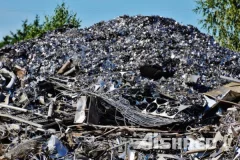
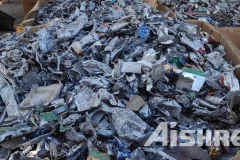
Zorba Sorting and Recycling Plant for Sale
2023-06-09"Zorba" is a non-ferrous metal scrap that is separated by eddy current separators in the metal recycling process and is mainly composed of aluminum and may also contain copper, nickel, zinc, alloy materials or other non-metallic scrap. Zorba usually comes from the recycling process of end-of-life vehicles, waste electrical and electronic equipment and other kinds of waste. AIShred Metal Recycling Solutions can provide shredding and sorting of various scrap metal materials including Zorba. AIShred Recycling Solutions cover almost all kinds of solid wastes. Our equipment is being used in many recycling facilities around the world. Whether it is material recovery or energy recovery, our equipment can perfectly meet the design requirements and complete the task excellently. Choose AIShred to improve production efficiency, reduce energy consumption, and help your waste mining business run reliably for a long time. We are ready to provide any possible support for your business planning at any time, please leave
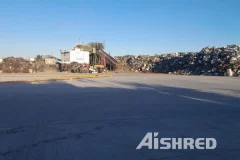
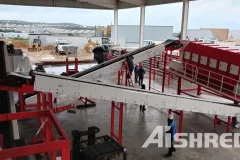
Scrap steel is a valuable resource that can be utilized to reduce dependence on mining and to contribute towards a more sustainable future. One of the most popular ways to recycle scrap steel is by using double-shaft shredders to process it. Double-shaft shredders are powerful machines that can handle large volumes of scrap steel and reduce it to manageable sizes for further processing. Double-shaft shredders feature two counter-rotating shafts fitted with blades that shred scrap steel into smaller pieces. The blades on each shaft are positioned in a way that maximizes efficiency and minimizes downtime. The machines are designed to handle a range of scrap steel materials, including cars, appliances, household goods, and industrial waste. The shredded steel can then be fed into a furnace for smelting, or it can be processed further into other steel products. Using double-shaft shredders to process scrap steel has several advantages. Firstly, it reduces the pressure on the mining industry to extract more iron
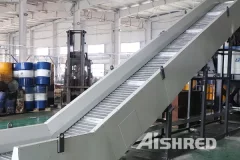
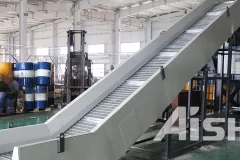
Waste oil drums mainly refers to various IBC tank, gasoline containers, paint drums and other iron metal barrels. Waste oil drums are the most common liquid storage container. After the materials are used up, the waste oil drum contains various hazardous wastes. Do not dispose at will. Some enterprises or individuals dispose of abandoned oil barrels and IBC tanks at will after using up oil or sulfuric acid, this is illegal in most countries. Utilization value of waste oil drumsAll waste oil drums are pressed and formed by high quality sheet metal, which has high recycling value. Scrap iron can be recycled and smelted twice for use by crushing and shredding.Recycling of waste oil drumsVarious oil drums are widely used around the world. Oil drums have the characteristics of simple manufacturing process, low cost, simple structure, and good sealing performance. By using paint coating and anticorrosive technology, they can be used as an irreplaceable container. However, the materials stored in the oil barrel are
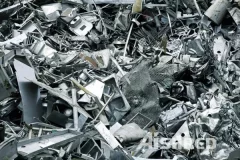
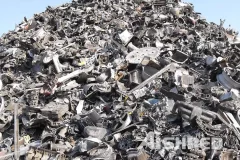
Aluminium Scrap Recycling Process
2022-08-21Aluminum is one of the metals with the highest recovery rate and the largest demand in the world. The energy used for recycling waste aluminum is only 5% of the new aluminum from its ore bauxite, which is a very cost-effective and environmentally friendly business. Moreover, aluminum is infinitely recyclable, which means that it can be recycled repeatedly without losing the corresponding quality. Aluminum and aluminum alloy products are widely used in our daily life, such as cans, doors and windows, electronic products, building templates, automobiles, etc. In recent years, the demand for aluminum in the world has gradually increased, and the price of aluminum has also experienced several rounds of increase. It has become an urgent task to improve the recovery of aluminum. So, what are the waste aluminum recovery processes and what equipment are needed? Let AIShred give you a brief introduction. Aluminium Scrap Recycling ProcessThe recycling of aluminum scrap is not a complicated process. It is a mature
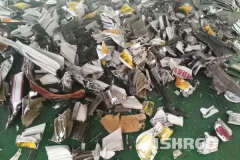
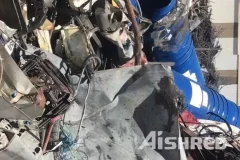
Scrap Metal Shredder Machine for Sale
2022-07-29Scrap metal, as a material with a high recycling value, has always been favoured by the recycling industry, but in general scrap metal is large, difficult to collect and transport, and needs to be pre-shred before recycling. For the disposal of such materials we mainly recommend the low speed, high torque double-shaft shredder. The "double motor + double planetary reducer" configuration gives the machine plenty of power and stable power transmission during use.Our cutters are made of NiCrMo, a high alloy steel imported from Europe with both hardness and toughness, high wear resistance with a powerful shredding effect. Moreover, our cutters can be repaired by overlay welding, which greatly reduces post-operating costs, and can be customized according to the actual material situation and specific requirements of the customer.If you also have a need for scrap metal shredding, please do not hesitate to contact us and we will provide you with a detailed description of our equipment.



